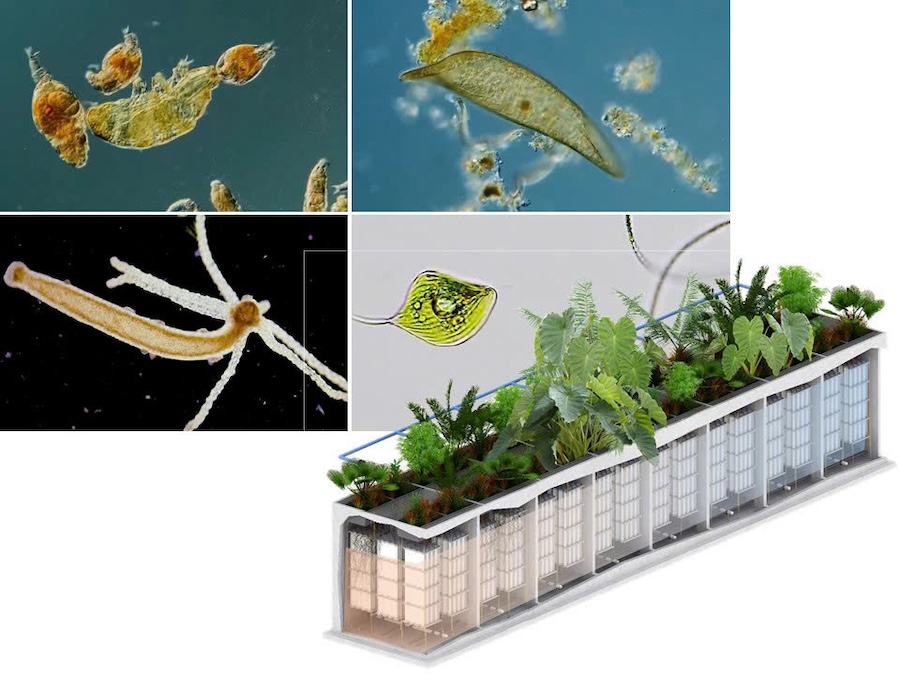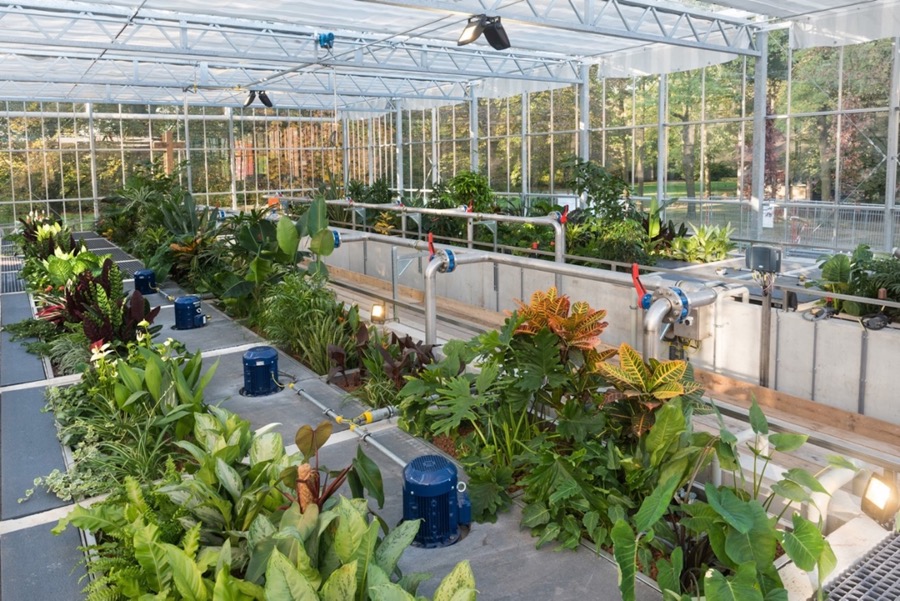MNR wastewater treatment technology is emerging as one of the most promising green solutions in the environmental sector today. Amid escalating climate change and worsening water pollution, the need for efficient, eco-friendly wastewater treatment technologies has never been more urgent. Join Dai Nam as we delve into the details of MNR technology in this article.
1. What is MNR Wastewater Treatment Technology?
MNR, or Metabolic Network Reactor, is an advanced wastewater treatment technology that combines biofilm processes with natural plant root systems. This innovative approach integrates biological treatment with membrane filtration, leveraging the natural purification capabilities of plant roots and microorganisms adhered to filter media surfaces.
The hallmark of MNR technology lies in its use of aquatic plant roots, which serve dual purposes: facilitating biological filtration and supporting microorganisms that degrade pollutants in wastewater. The system comprises multiple filtration tanks, each designed for specific treatment stages, from preliminary processing to final disinfection. MNR is widely applied in treating domestic wastewater, urban wastewater, and effluents from schools, hospitals, and residential areas, ensuring compliance with QCVN standards for treated wastewater.
2. Advantages of MNR Wastewater Treatment Technology
MNR represents a significant leap forward in environmental technology, blending natural biological processes with cutting-edge engineering. Below are the key advantages that make MNR an ideal choice for urban and domestic wastewater treatment systems:
Eco-Friendly: Unlike traditional industrial wastewater treatment methods that rely on chemicals, MNR harnesses natural filtration through plant roots and biofilms. This system produces no harmful byproducts or secondary pollution, ensuring harmony with the surrounding environment.
Optimized Biological Treatment: The system utilizes aquatic plant roots to create a stable habitat for aerobic and anaerobic microorganisms. These microorganisms adhere to the roots and filter media, effectively breaking down organic pollutants in the wastewater.
Flexible Design: MNR systems can be tailored to suit various scales, from small to large, and are easily expandable to meet growing treatment demands.
3. MNR Wastewater Treatment Process
3.1. Preliminary Treatment
The initial stage focuses on removing insoluble solids, oils, and grease while stabilizing inflow. Wastewater passes through coarse and fine screens to filter out large debris such as plastic bags, leaves, and tissues. It then flows into a grease trap to remove oils and fats, which can clog systems and inhibit microbial activity. Additionally, an equalization tank stabilizes flow and pollutant loads, ensuring consistent downstream processing. In some systems, slow mixers or recirculation pumps prevent sediment buildup.
3.2. Main Treatment
This is the core of the MNR wastewater treatment process, where biological treatment occurs in tandem with plant roots and biofilms.
MNR Tank 1
Function: Reduces BOD, COD, and TSS.
Principle: Aerobic microorganisms adhere to plant roots and filter media (e.g., gravel, stones, or technical foam), using oxygen to degrade dissolved organic matter. Aquatic plant roots not only act as a substrate for microbes but also supply oxygen through photosynthesis, enhancing treatment efficiency without heavy reliance on aeration equipment.
MNR Tanks 2 and 3
Function: Denitrification and degradation of complex organic compounds.
Principle: In low-oxygen conditions, denitrifying microorganisms convert nitrates (NO₃⁻) into nitrogen gas (N₂), which is released into the atmosphere. In anaerobic zones, anaerobic bacteria break down compounds like sulfur and high-molecular-weight organic matter.
MNR Tanks 4, 5, and 6
Function: Finalizes biological filtration and improves effluent quality.
Principle: These tanks feature densely packed filter media and plant roots. Microorganisms continue to degrade residual pollutants, while fine solids are trapped by the natural root membrane and filter materials.
Biological Sedimentation Tank
Function: Separates microbial sludge from treated water.
Principle: Sludge settles at the tank’s bottom and is either pumped to a sludge storage tank or recirculated to MNR Tank 1 if needed. The clarified water is directed to the disinfection stage.
3.3. Disinfection
After biological treatment and sludge separation, the wastewater undergoes disinfection—the final step in the MNR process. This stage eliminates any remaining pathogenic microorganisms, ensuring the treated water is safe for discharge into the environment or reuse.
Conclusion
MNR wastewater treatment technology marks a significant stride toward sustainable green solutions, maximizing natural processes to treat wastewater efficiently. However, its application in Vietnam remains relatively new and faces certain challenges. Selecting the right wastewater treatment technology not only helps businesses optimize investment and operational costs but also demonstrates a commitment to environmental protection. This, in turn, enhances brand reputation and responsibility in the eyes of partners, customers, and the community.

